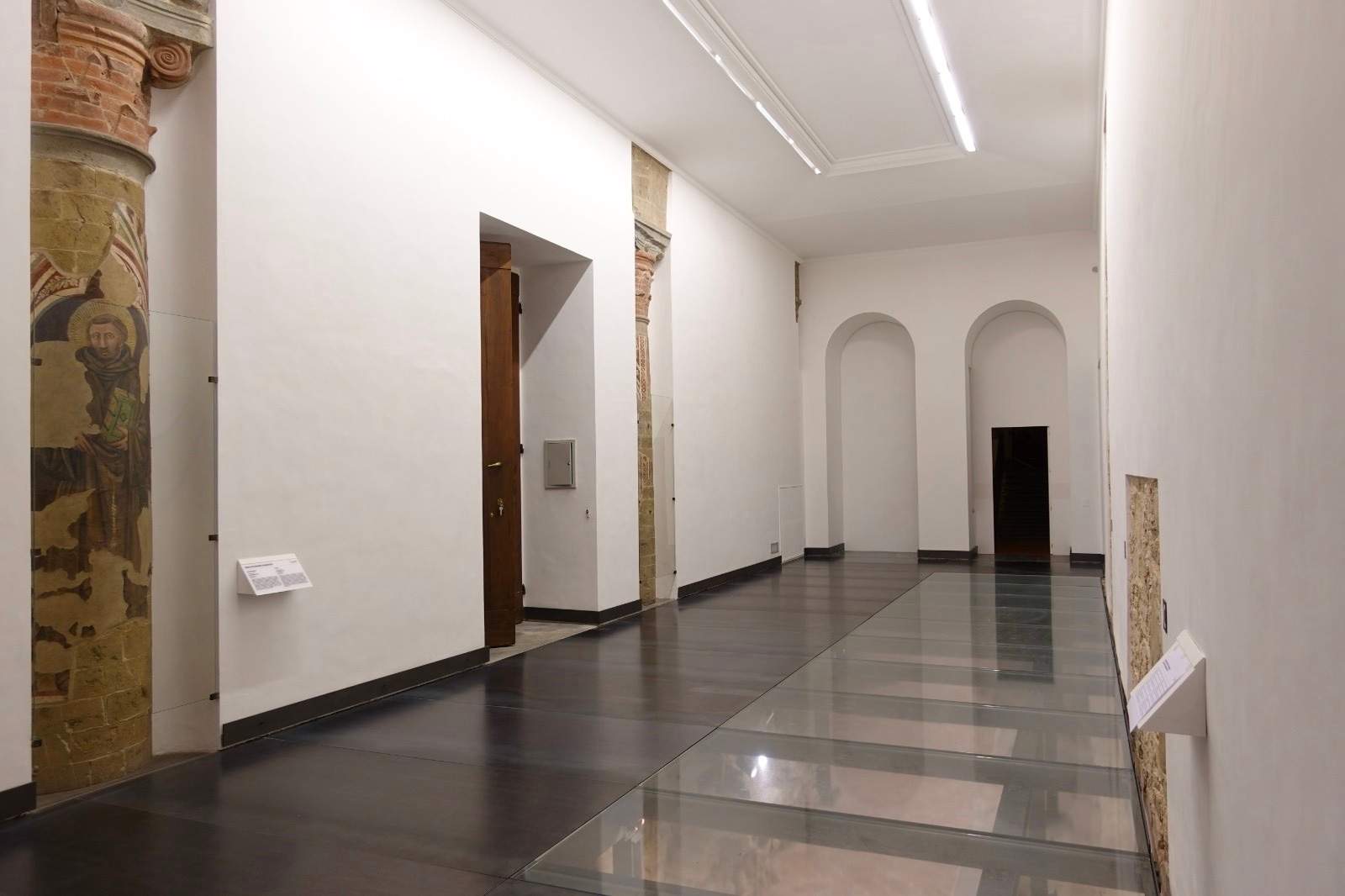In Florence, the room with the excavations of the church of San Pier Scheraggio, which has been part of the Uffizi complex since the 16th century, when it was incorporated into Vasari’s great structure, opens to the public after 20 years of restoration. Erected in the 11th century on the remains of a pre-existing church, the church of San Pietro in Scheraggio (the name comes from a ditch that was later buried and was useful for “clearing” sewage) was originally a large three-aisled building with a crypt, bell tower and cemetery area. Its construction predates that of Palazzo Vecchio, and in the Middle Ages it played an important role in Florentine civic life, since it hosted the meetings of the city government bodies and the solemn oath of the Priors of the Arts. In this place Dante Alighieri also took the office of Prior, as a member of the Arte dei Medici e Speziali, for the period from June 15 to August 25, 1300.
In the 15th century, in order to enlarge the space around the Palazzo della Signoria, the northern nave of the church was destroyed, making new work necessary, such as raising the floor. With the building of the Uffizi in the 16th century, the church was greatly downsized, but it continued to be officiated until it was deconsecrated in 1782 at the behest of Pietro Leopoldo of Lorraine.
The reopening involved the creation of a new layout and enhanced lighting (a double intervention by architect Antonio Godoli), which recovers and updates the usability of these spaces, which had already undergone restoration in the 1930s. The ancient vestiges of one of the church’s three naves are made visible below the transparent crystal flooring, on which museum visitors will be able to walk to take a closer look at the remains of the medieval architecture of San Pier Scheraggio (along with those of a crypt and cloister built later, in the 15th century). The excavations that unearthed these structures, along with the remains of some burials found in the lower level of the crypt, date back to the early 2000s; until now this area was only visible from a walkway and they were not included in the tour route, but only accessible on special occasions. The public will also be able to admire the column with a 14th-century fresco by an unknown 14th-century Florentine artist, depicting St. Francis of Assisi, dressed in a brown habit encircled at the waist by a cord and with his hands marked by the stigmata, the saint’s distinguishing characteristic.
With this reopening, the Uffizi also wants to ideally pay homage to St. Francis of Assisi on the anniversary of his death on October 3, 1226. A tribute that is also virtual: in fact, Francesco Fratello Universale - vita e culto del poverello d’Assisi, an online exhibition (“hypervision”) coordinated by Monica Alderotti and dedicated to the crucial moments of the saint’s life, with an introduction by the Guardian of the Sanctuary of La Verna, Father Francesco Brasa OFM, is now available on the Galleries’ website. The hypervision, which can be accessed on the Uffizi website, consists of 20 high-definition images of works from the Galleries’ collection, with explanations and commentary, including masterpieces by Andrea del Sarto, Jacopo Ligozzi, Federico Barocci, El Greco, Ludovico Cigoli, and Cristofano Allori.
“The opening to the public of San Pier Scheraggio these days,” comments Uffizi director Eike Schmidt, “is an event dense with meaning, if we think of the role of civic space that the church had in medieval times. And it is important that after almost two decades the fresco with St. Francis, a very ancient image of the national saint, returns visible to all, within a state institution like the Uffizi. To celebrate the feast of the Assisian saint, we are also dedicating a beautiful virtual exhibition to him, which can be visited online worldwide: it is an opportunity to rethink the universal value of his message of love for creation, through the magnificent works in our collections.”
Pictured is the room with the crystal floor and, on the left, the column with the 14th-century fresco depicting St. Francis.
 |
| Florence, excavation of San Pier Scheraggio, the church of Dante's oath, opens |
Warning: the translation into English of the original Italian article was created using automatic tools. We undertake to review all articles, but we do not guarantee the total absence of inaccuracies in the translation due to the program. You can find the original by clicking on the ITA button. If you find any mistake,please contact us.